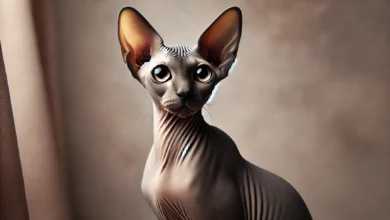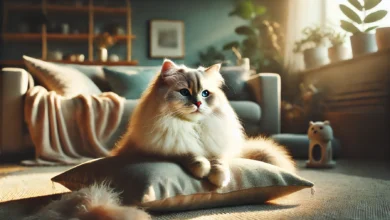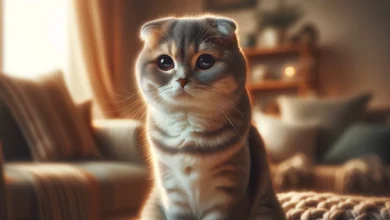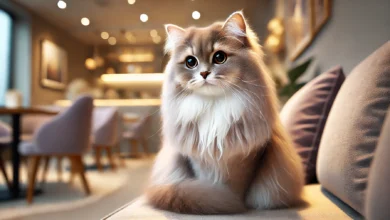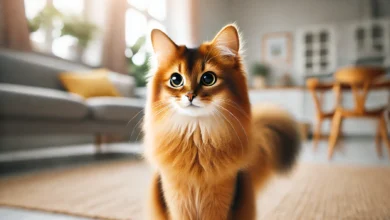The Exotic Shorthair: A Lazy Man’s Persian
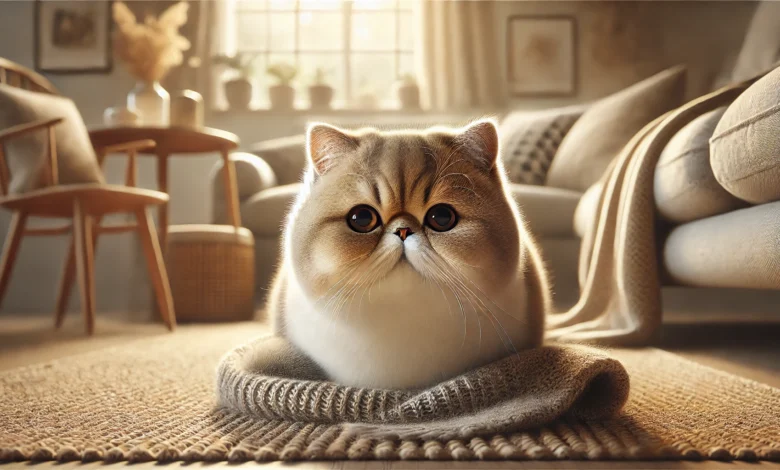
Are you enchanted with the Persian mystique but leery of grooming their long, opulent coats?
If so, the Exotic Shorthair is perhaps just the cat for you.
With its reputation as the ‘Lazy Man’s Persian,’ this breed possesses all the gentle nature and unique appearance of Persians but comes with a more low-maintenance coat.
In this article, learn about the origins, characteristics, and care requirements of this charming breed known as the Exotic Shorthair, helping you decide if it’s the perfect fit for your home.
Table of Contents
Origins and History of the Exotic Shorthair
The Exotic Shorthair began to take shape in the United States in the 1950s.
Breeders aimed to combine the distinctive characteristics of the Persian with the easy-care coat of the American Shorthair.
Their goal was to create a cat that retained the appealing appearance of the Persian but without its rigorous grooming requirements.
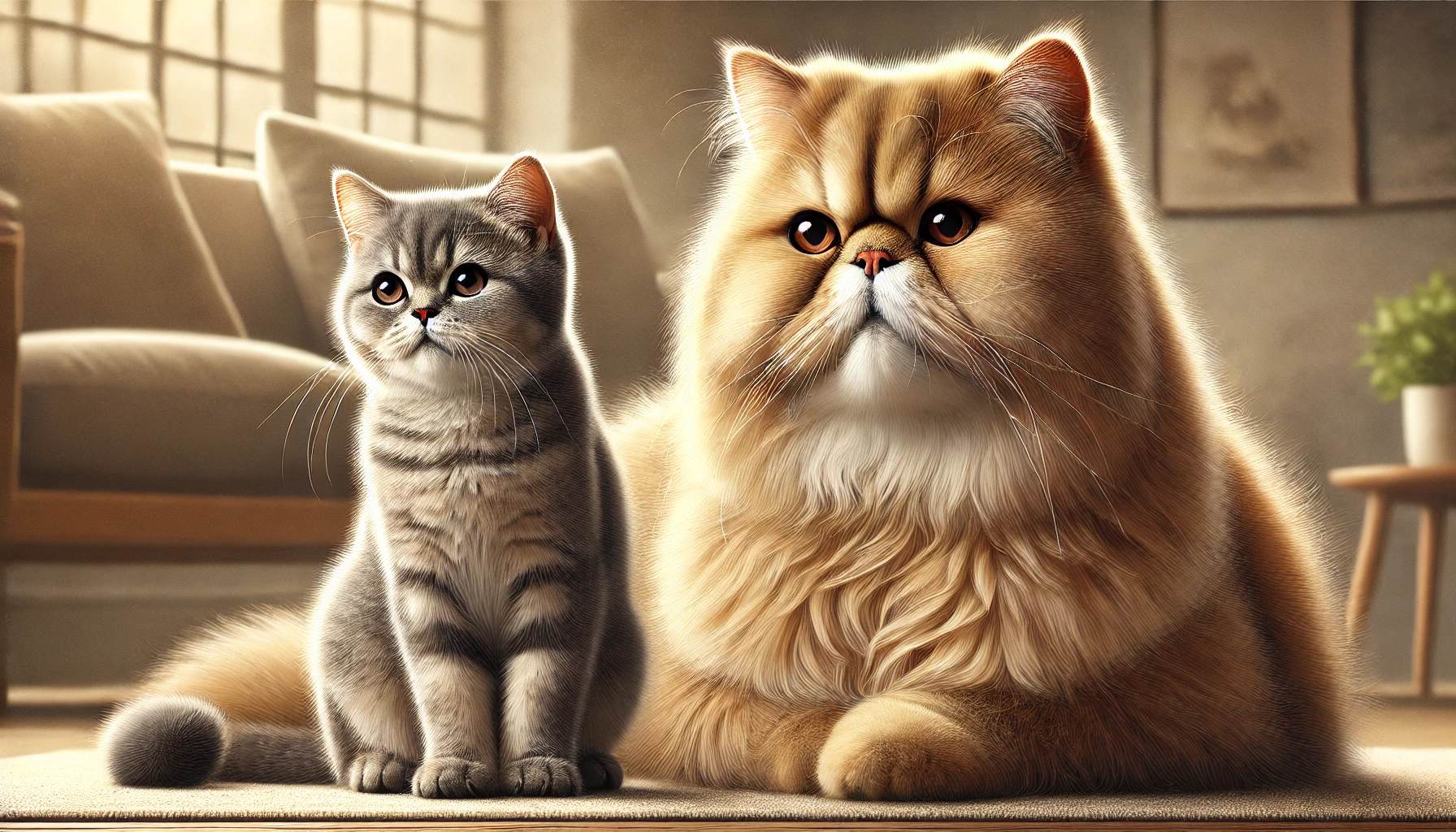
Development from Persian and American Shorthair Breeds
Initially, breeders crossed Persians with American Shorthairs to produce a short-haired cat that resembled a Persian.
The resulting kittens combined the round face, short nose, and large eyes of the Persian with a dense, plush coat.
Over time, other breeds such as the Burmese and Russian Blue were introduced to refine the Exotic Shorthair’s characteristics further.
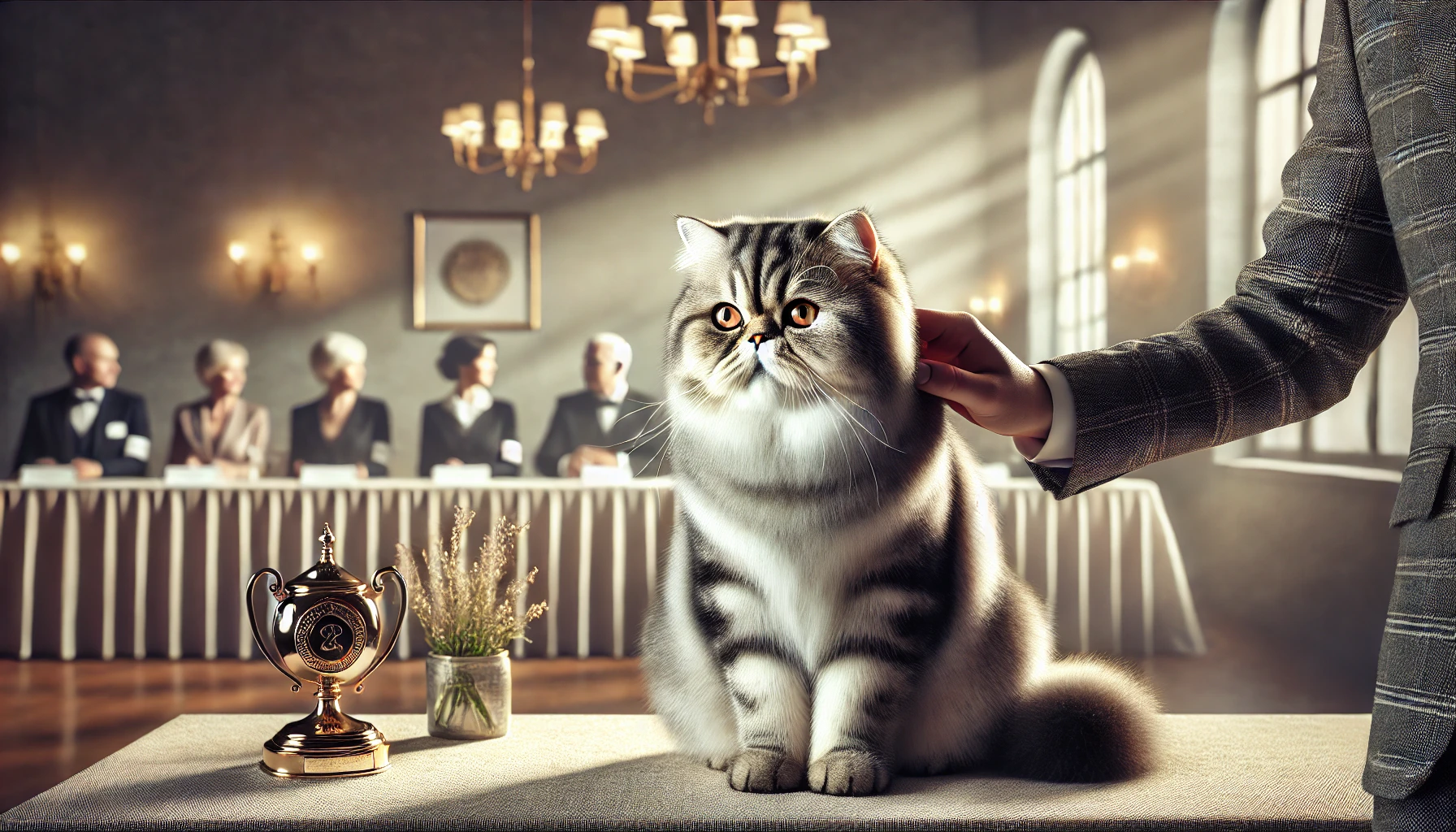
Recognition by Cat Fanciers’ Associations
The Exotic Shorthair gained official status in 1967 when the Cat Fanciers’ Association (CFA) accepted it as a distinct breed.
This recognition allowed Exotic Shorthairs to enter cat shows, further boosting their popularity among cat enthusiasts.
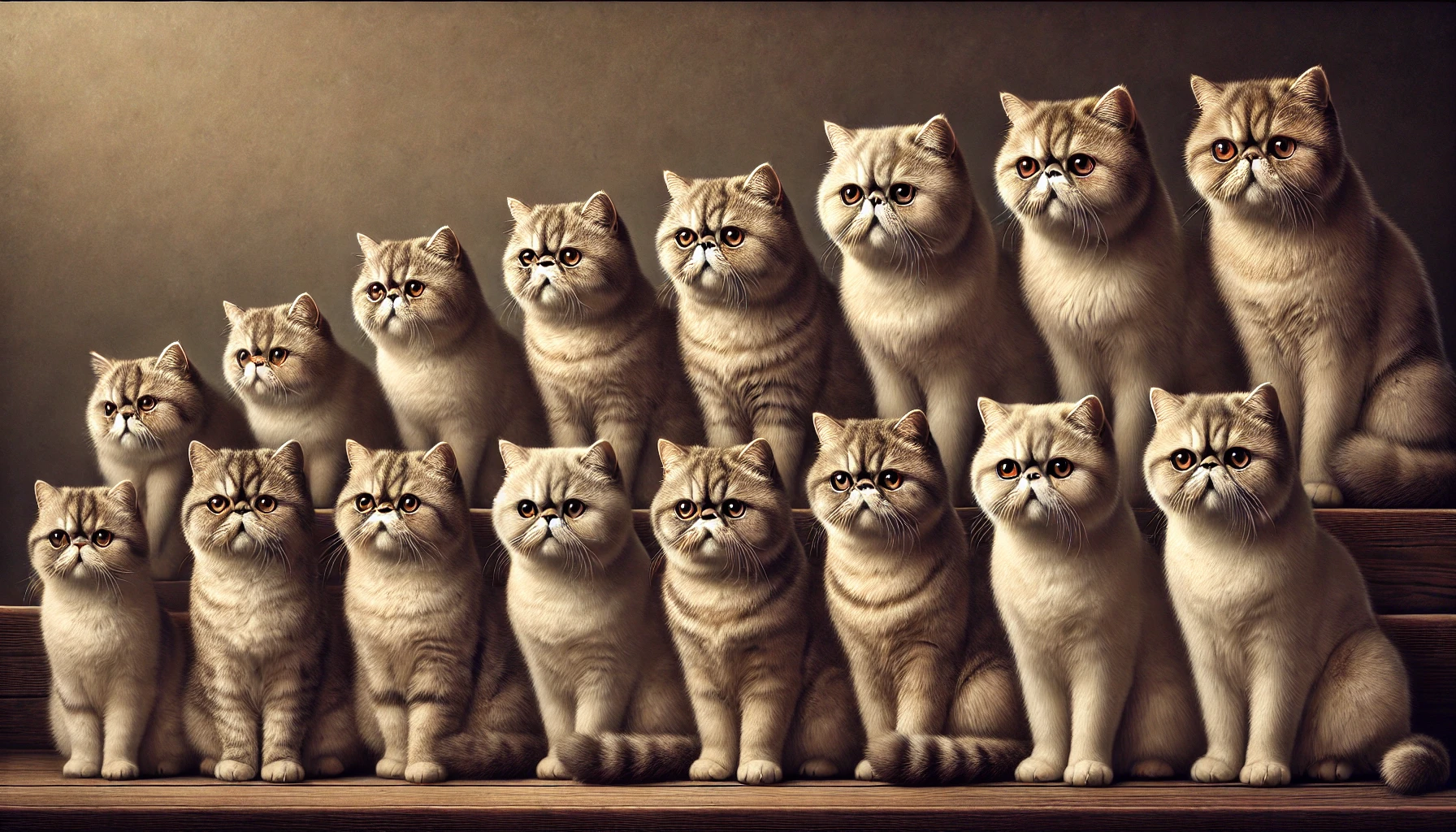
Changes in Breed Standard Over Time
As the popularity of the Exotic Shorthair continued to grow, breed standards became more defined.
In 1987, the CFA restricted outcrossing to only Persians, ensuring the Exotic Shorthair would retain its unique characteristics.
Today, breeding focuses on achieving round heads, short noses, and dense coats that meet specific standards.
Understanding the Exotic Shorthair’s origins highlights its unique blend of Persian elegance and the practicality of the American Shorthair.
This background sets the stage for exploring the breed’s distinctive physical characteristics.
The Exotic Shorthair, blending Persian elegance with American Shorthair’s easy care, emerged as a unique breed with an enduring appeal. It represents a low-maintenance alternative to the traditional Persian.
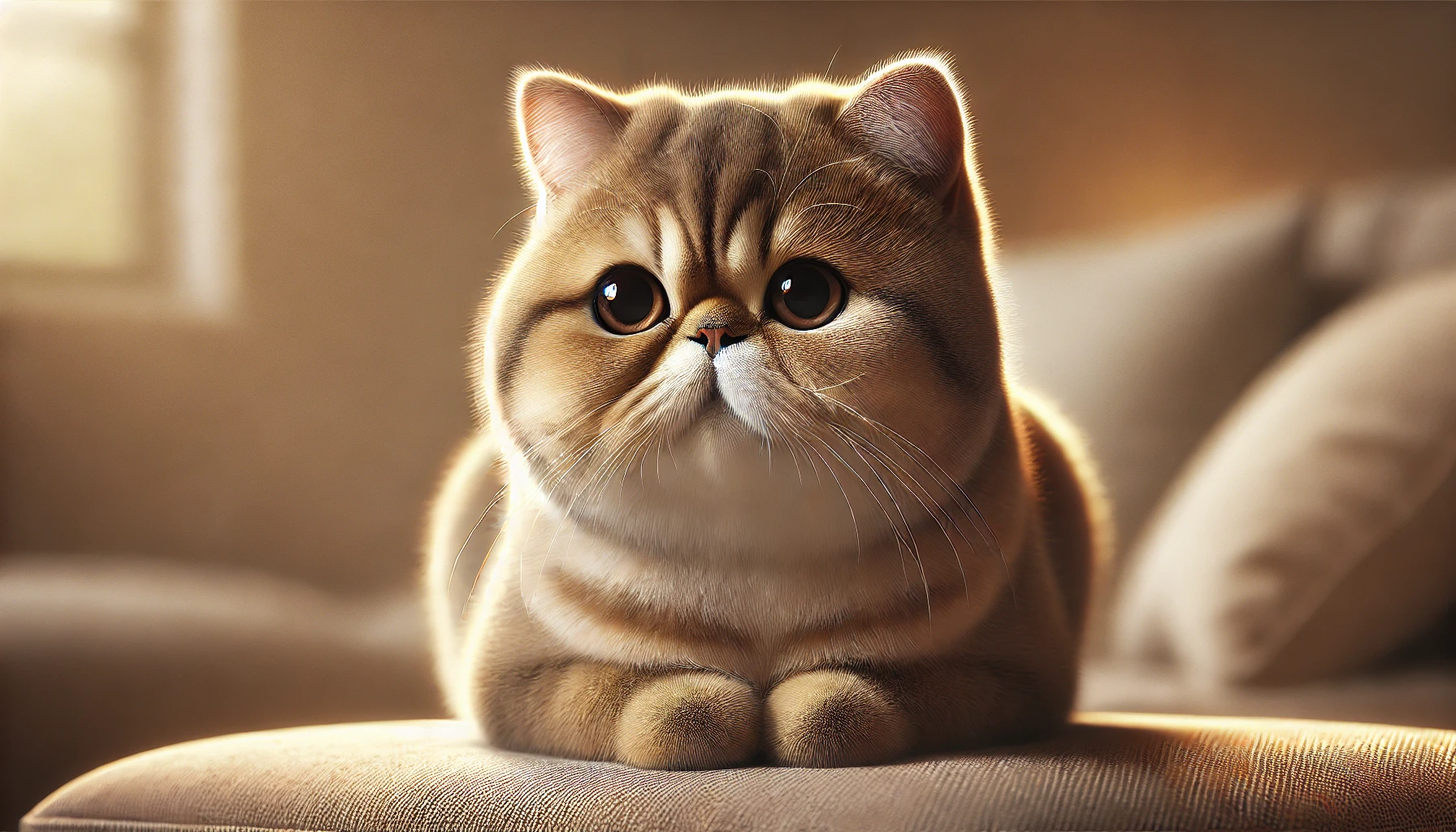
Distinctive Physical Characteristics
The Exotic Shorthair is truly one of a kind, bred to embody all the characteristics that distinguish a Persian but with a more manageable coat.
This combination results in a striking cat that remains practical for those seeking a low-maintenance companion.
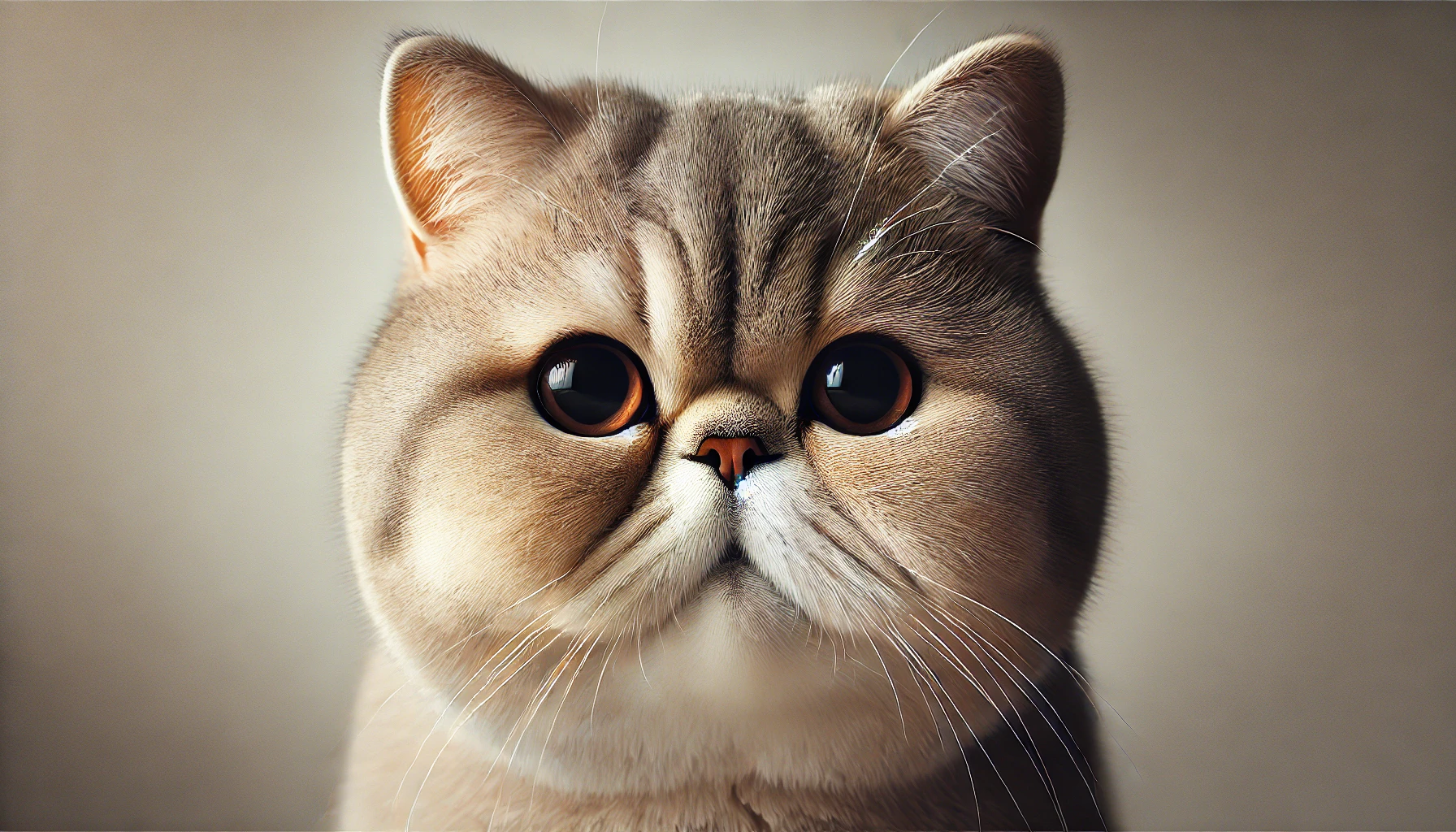
Unique Facial Structure and Expression
Perhaps the most distinctive feature of the Exotic Shorthair is its rounded face, complete with full cheeks and a short, broad nose.
This facial structure gives the breed a sweet, open expression that many find appealing.
Their large, wide-set, rounded eyes enhance their expressive nature, while small, rounded ears positioned low on the head further contribute to their characteristic appearance.
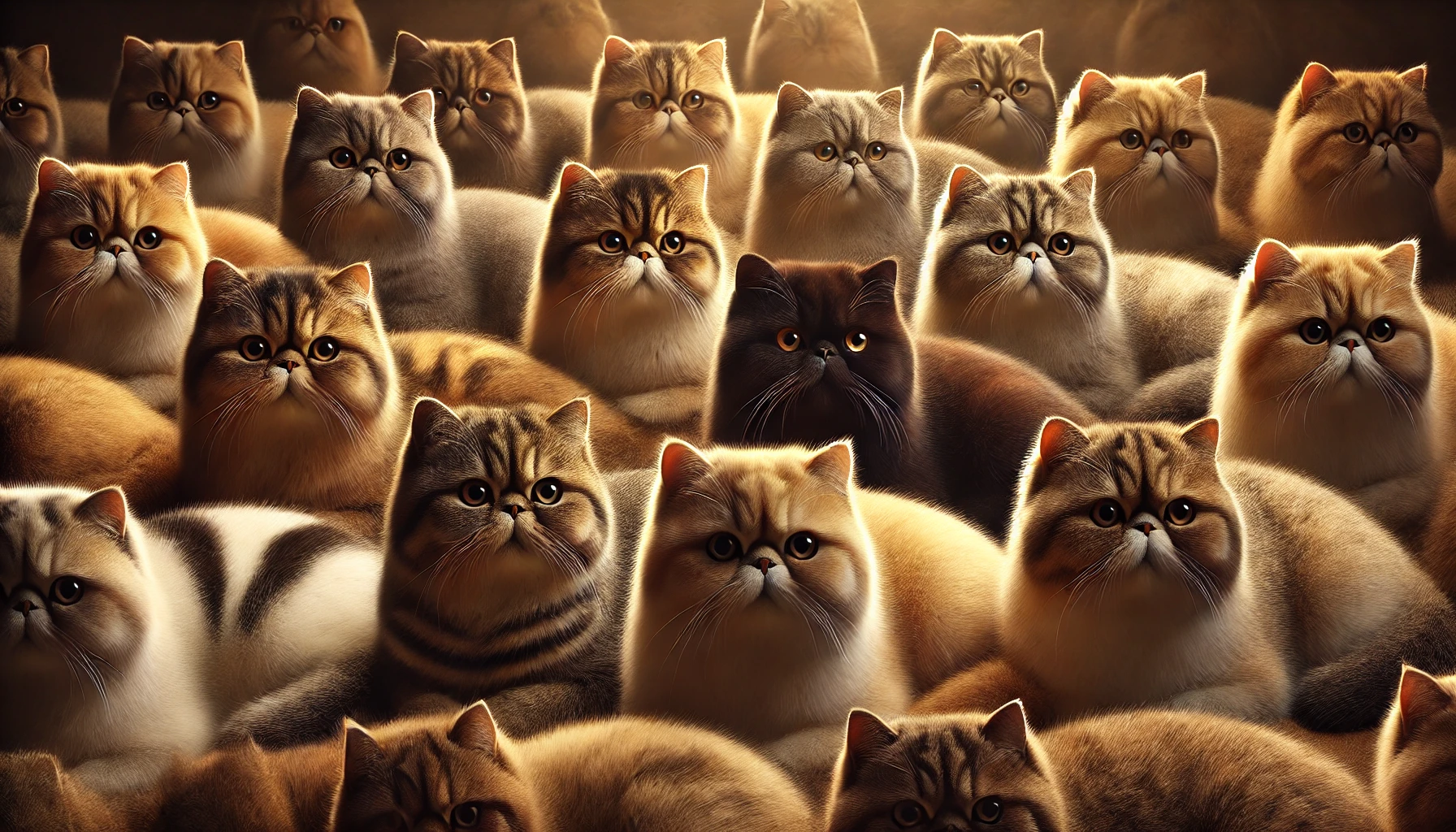
Coat Texture, Colors, and Patterns
The coat of the Exotic Shorthair is short, dense, and plush, with its thickness causing it to stand away from the body.
This unique texture gives the coat a very soft, inviting feel.
The breed’s coat comes in a wide variety of colors and patterns, allowing potential owners to select an Exotic Shorthair that suits their aesthetic preferences.
Common coat variations include:
- Solid colors: black, blue, cream, and white
- Tabby patterns: classic, mackerel, and spotted
- Bi-color and tri-color combinations
- Colorpoint patterns, as seen in the Siamese breed
This variety enables potential owners to choose an Exotic Shorthair that resonates with their personal sense of style.
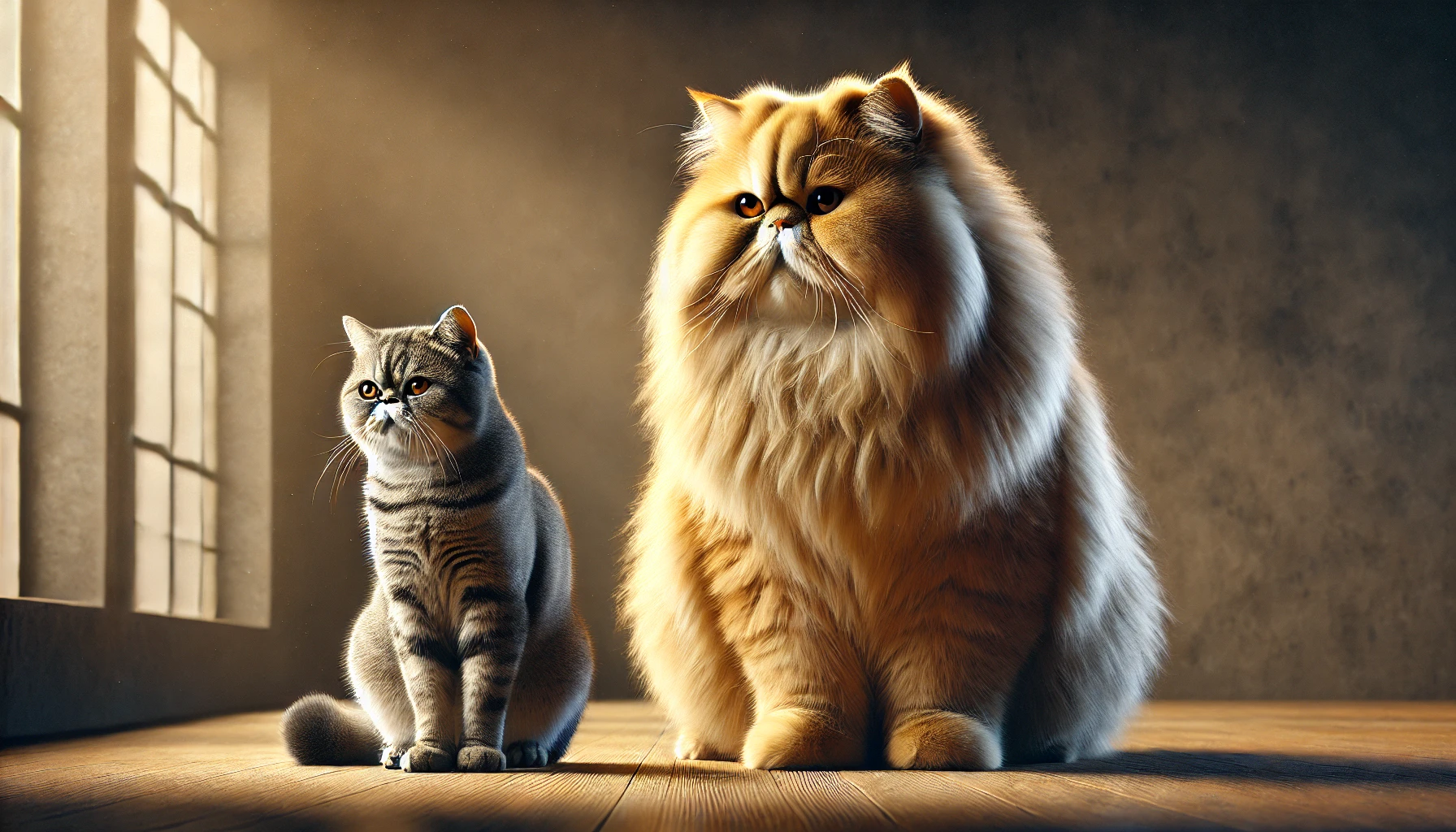
Size and Body Structure Compared to Persians
Exotic Shorthairs are medium to large-sized cats, with males typically weighing between 7 to 14 pounds and females being slightly lighter.
They possess a sturdy, muscular body with a broad chest and short, strong legs, giving them a cobby body type.
This robust structure resembles that of the Persian, although the Exotic Shorthair’s shorter coat offers a more understated look.
Overall, the Exotic Shorthair’s distinctive face, plush coat, and solid build place this breed in a class all its own.
These features, paired with its affectionate and outgoing nature, add to its growing popularity among cat enthusiasts.
The Exotic Shorthair embodies Persian charm with a short, dense coat that’s easy to maintain, paired with its iconic round face and large, expressive eyes.
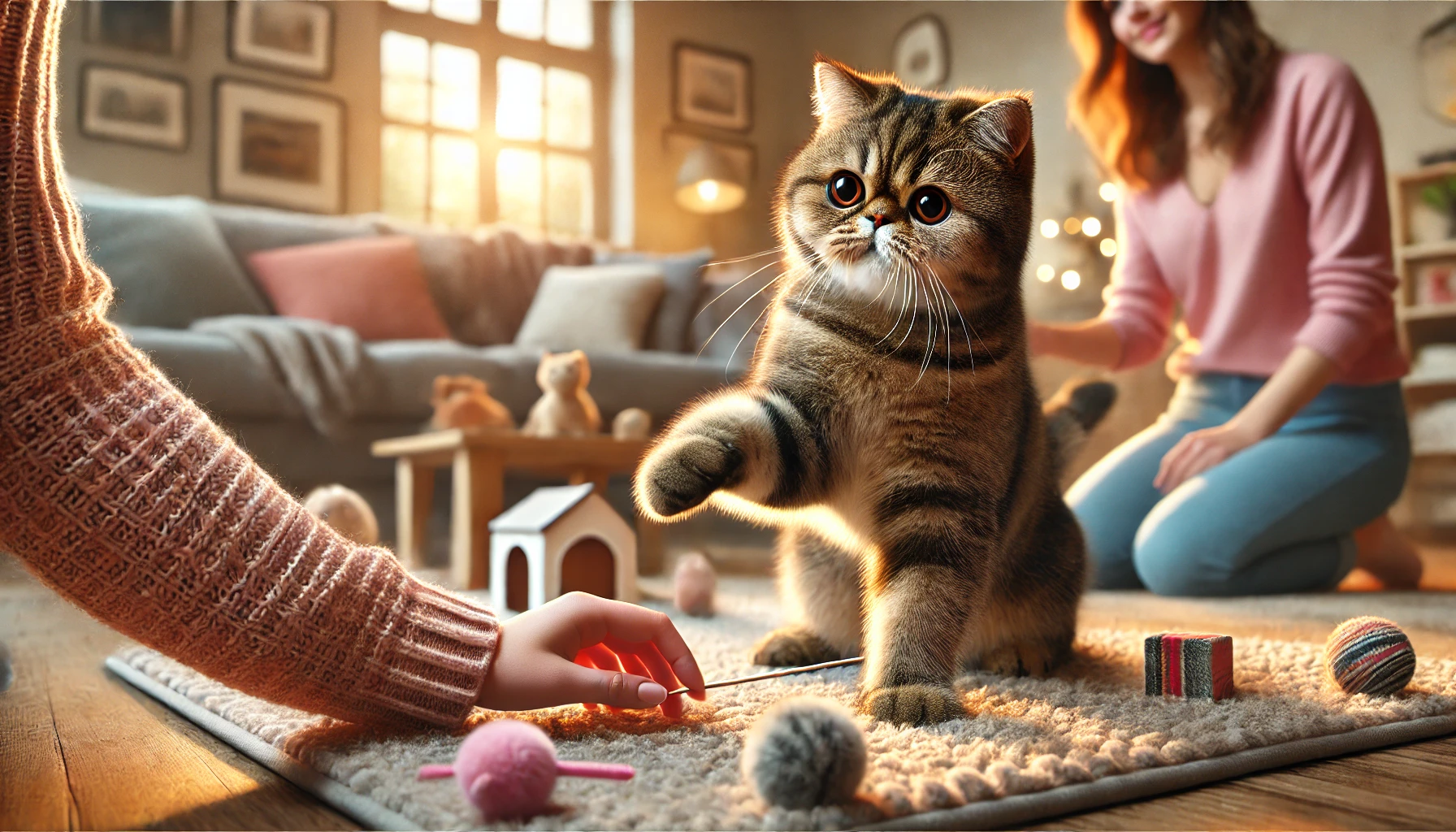
Temperament and Personality Traits
The Exotic Shorthair is renowned not only for its striking appearance but also for its excellent temperament.
This breed brings together the best of its parents, the Persian and the American Shorthair, resulting in a cat that is loving, playful, and adaptable.
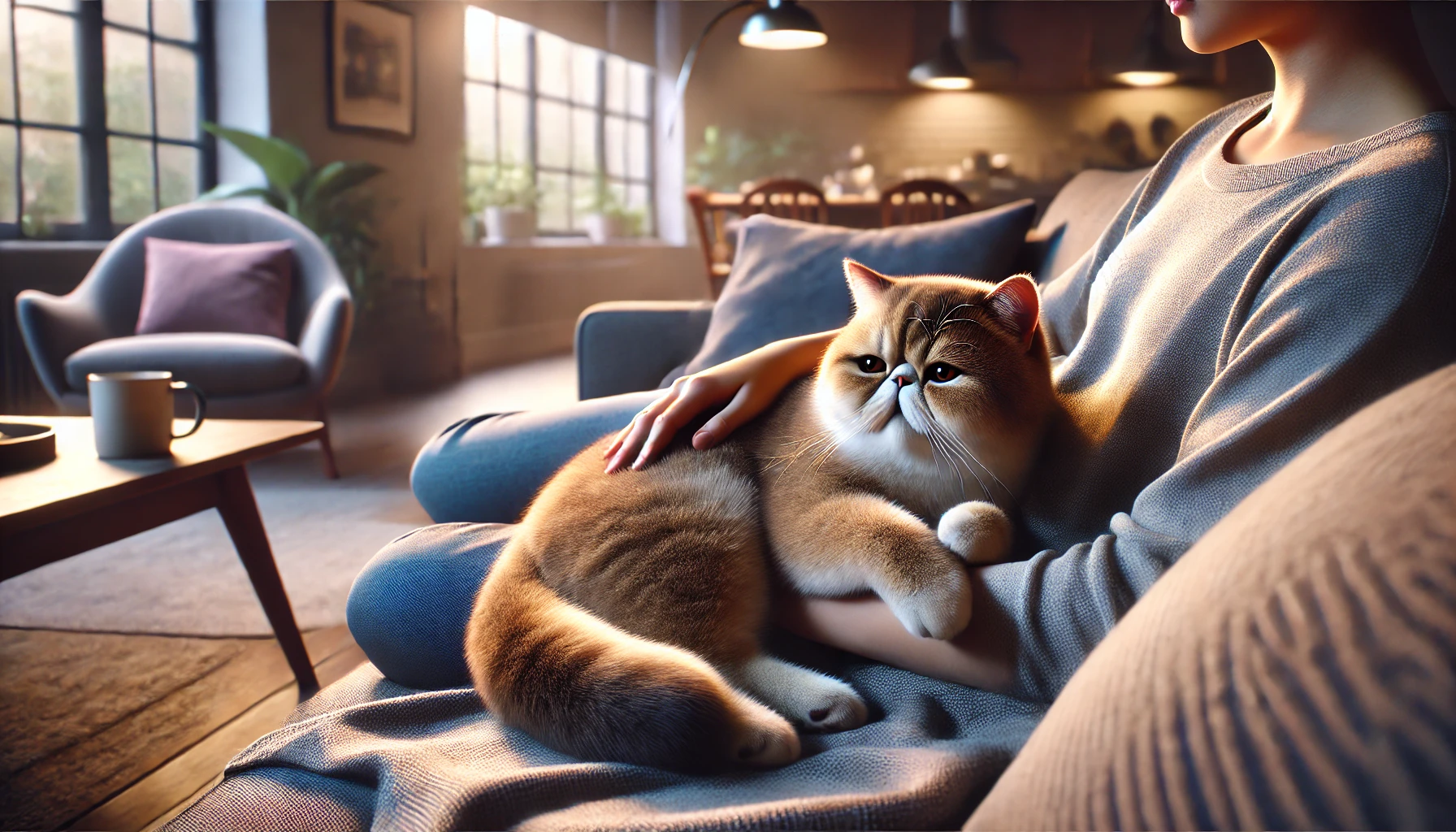
Affectionate Nature and Social Behavior
Exotic Shorthairs are famous for their gentle and loving nature.
They form close bonds with their human companions and enjoy being involved in daily activities.
Unlike some breeds that may be more reserved, Exotic Shorthairs relish human interaction and will often follow their owners from room to room, always staying within arm’s reach for petting or cuddling.
Their playful side adds even more to their charm.
Despite their stocky build, Exotic Shorthairs are surprisingly agile and enjoy interactive play sessions.
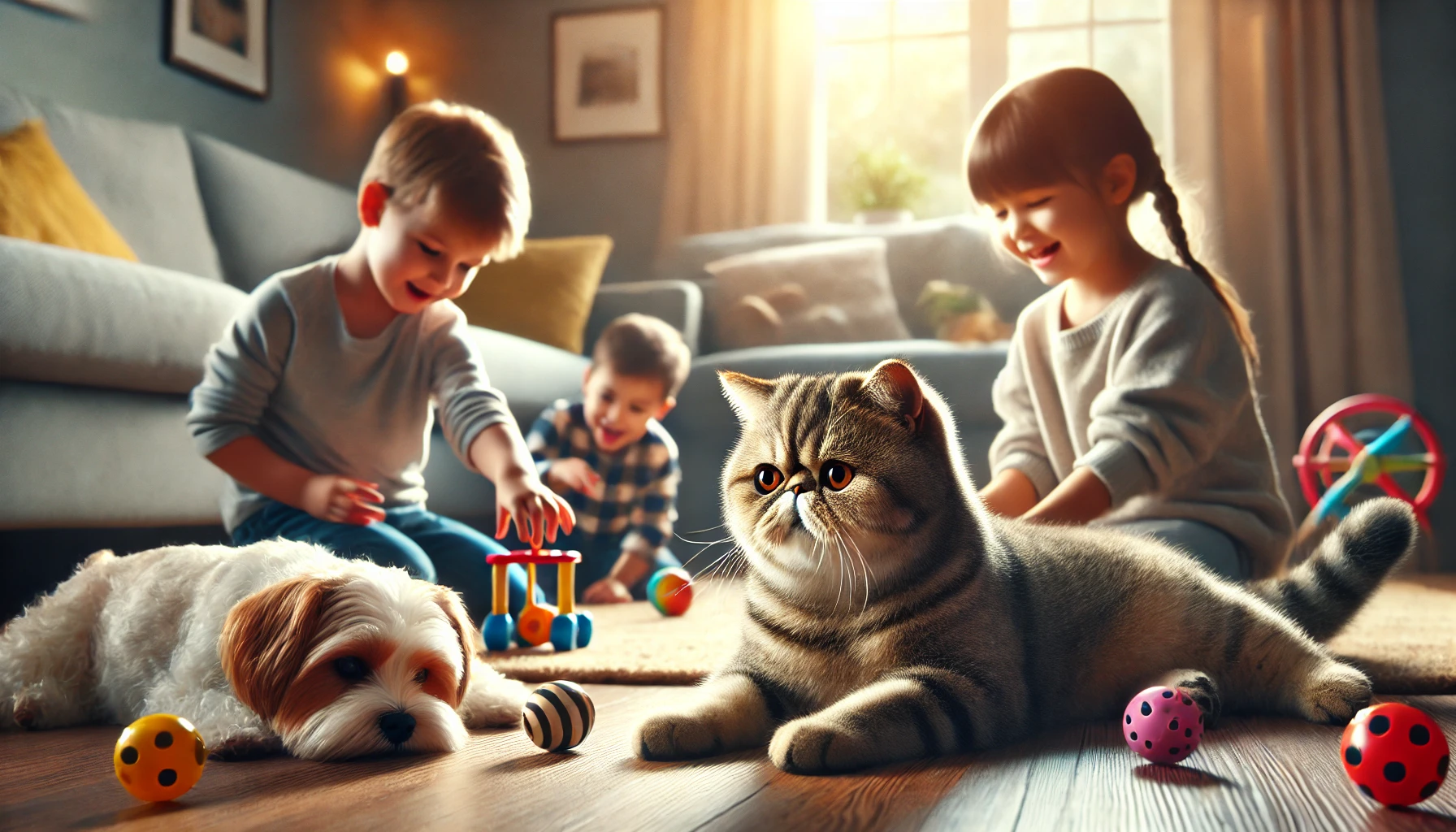
Compatibility with Families and Other Pets
This breed fits well within family settings, even in homes with children and other pets.
Exotic Shorthairs are easygoing, tolerant, and patient; they typically get along well with other cats and even dogs.
Their adaptable nature allows them to adjust smoothly to different household dynamics, making them a versatile choice for various types of homes.
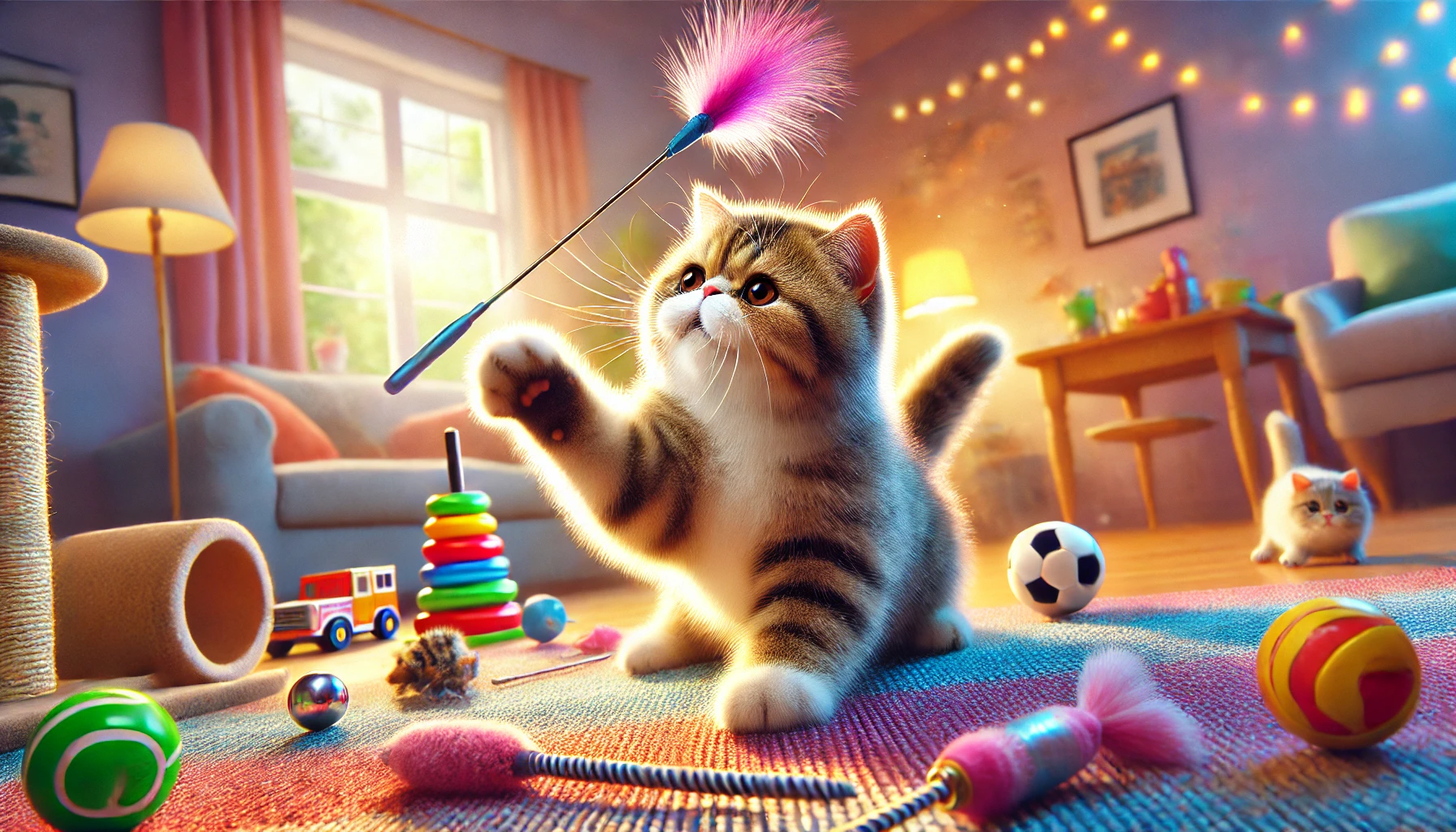
Activity Levels and Playfulness
Exotic Shorthairs are laid-back yet still playful.
They enjoy interactive toys and games that pique their curiosity.
While they are not particularly demanding of attention, they are happy to relax nearby, providing quiet companionship.
Their balanced energy level makes them equally suitable for active families and quieter living environments.
In summary, the Exotic Shorthair is an affectionate, social breed with balanced activity levels, making it an ideal companion for different households.
Whether you’re seeking a playful friend or a cuddly lap cat, this breed truly offers the best of both worlds.
With a balance of affection and playfulness, the Exotic Shorthair adapts well to family life, providing companionship without being overly demanding.

Health Considerations and Common Issues
Though the Exotic Shorthair is a hardy and generally healthy breed, there are some health considerations to be aware of to help your feline friend lead a full and happy life.
Regular veterinary check-ups combined with informed care can go a long way in mitigating potential health problems.
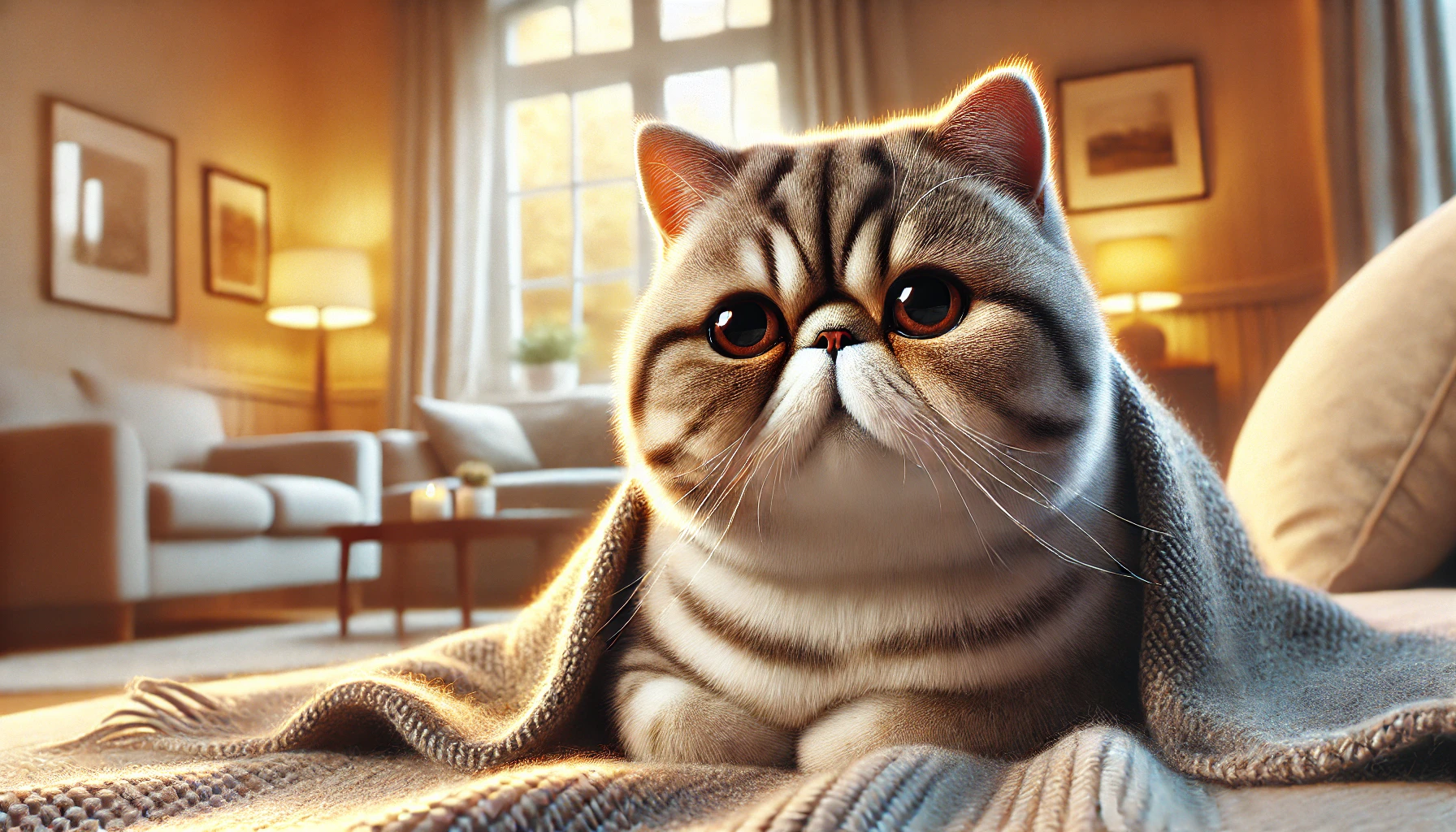
Brachycephalic Syndrome and Respiratory Concerns
Due to their brachycephalic (flat-faced) structure, Exotic Shorthairs can experience several potential breathing issues.
This facial anatomy may lead to the following:
- Breathing problems: Narrowed nostrils and elongated soft palates can result in labored breathing, particularly in hot or humid conditions.
- Snoring and snorting: Common due to obstructed airways.
- Heat sensitivity: Difficulty in regulating body temperature, which can make them more prone to heatstroke.
To mitigate these concerns:
- Keep your Exotic Shorthair cool and comfortable, especially during warmer months.
- Avoid strenuous activities, particularly in hot weather.
- Monitor for any symptoms of respiratory problems and consult your vet if you have any concerns.
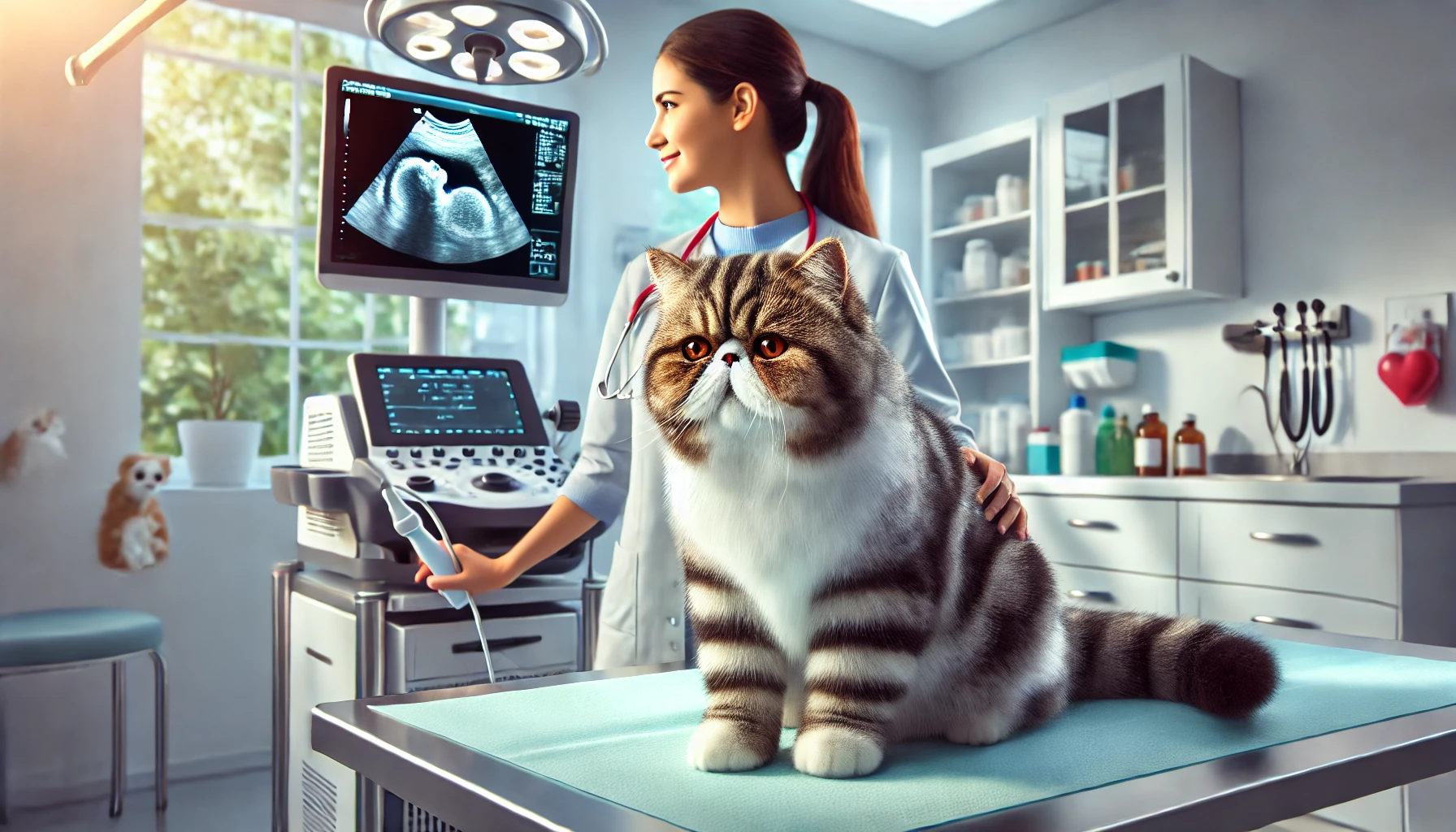
Polycystic Kidney Disease Incidence
Exotic Shorthairs have a hereditary predisposition to Polycystic Kidney Disease (PKD), a condition where fluid-filled cysts develop in the kidneys, potentially leading to kidney failure.
Symptoms may include:
- Increased thirst and frequent urination
- Loss of appetite
- Weight loss
- Lethargy
Early diagnosis is key.
Responsible breeders generally test their breeding cats for PKD, so it’s advisable to inquire about health clearances when adopting or purchasing an Exotic Shorthair.
Routine vet visits can help monitor kidney health and address any issues as they develop.
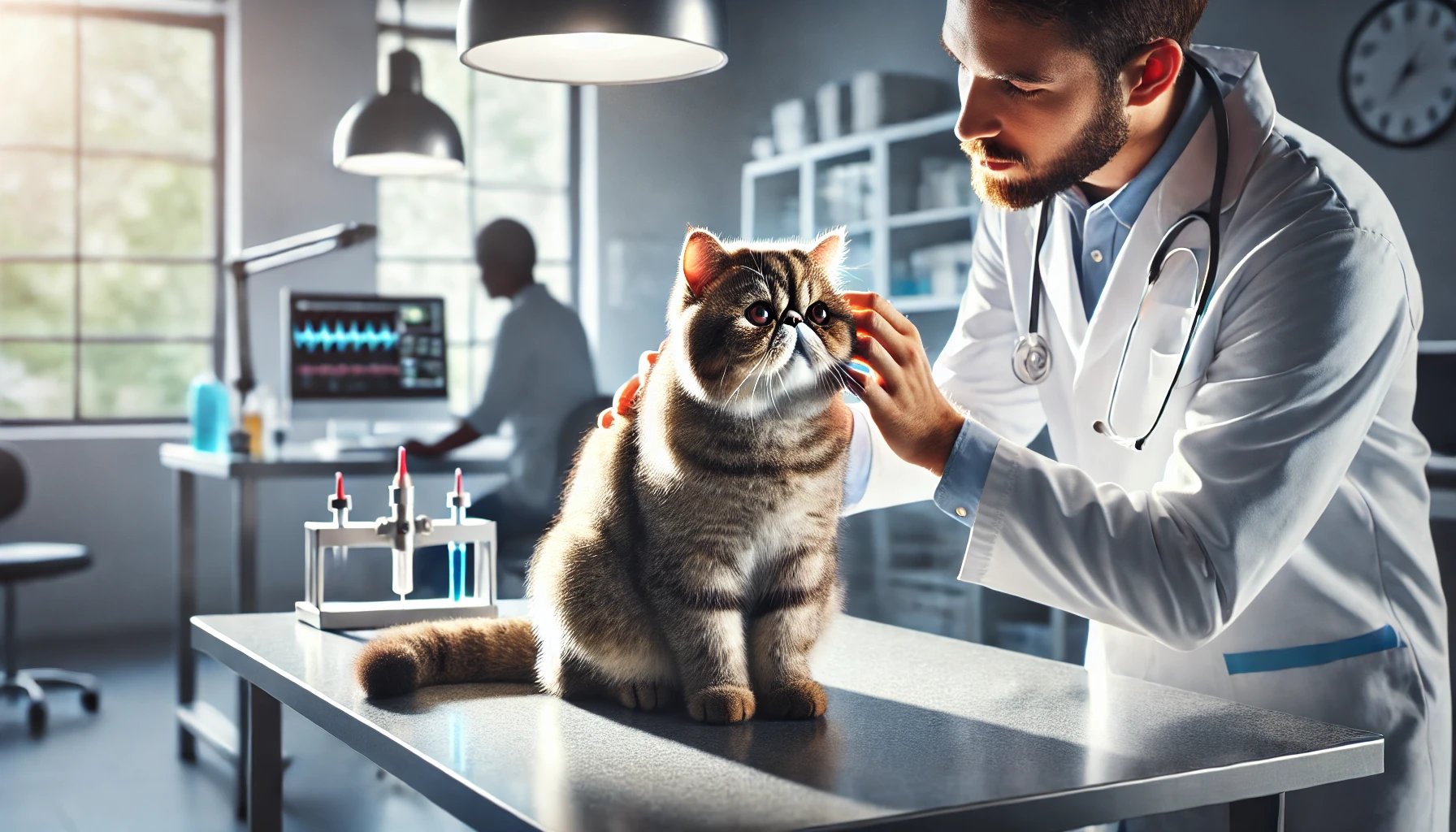
Recommended Veterinary Care and Tests
Preventative care is essential for maintaining your Exotic Shorthair’s health.
Consider the following:
- Regular check-ups: Routine vet visits help detect underlying health issues that may not be immediately apparent.
- Vaccinations: Keep up-to-date with core vaccinations to protect against common feline diseases.
- Dental care: Regular dental check-ups and cleaning to prevent periodontal disease.
- Weight management: Monitor diet and activity levels to prevent obesity, which can contribute to other health issues.
Being vigilant about these health considerations will help ensure your Exotic Shorthair leads a long and fulfilling life.
Due to their flat-faced structure, Exotic Shorthairs may experience respiratory issues and are also susceptible to Polycystic Kidney Disease. Regular vet visits are essential to maintaining their health.
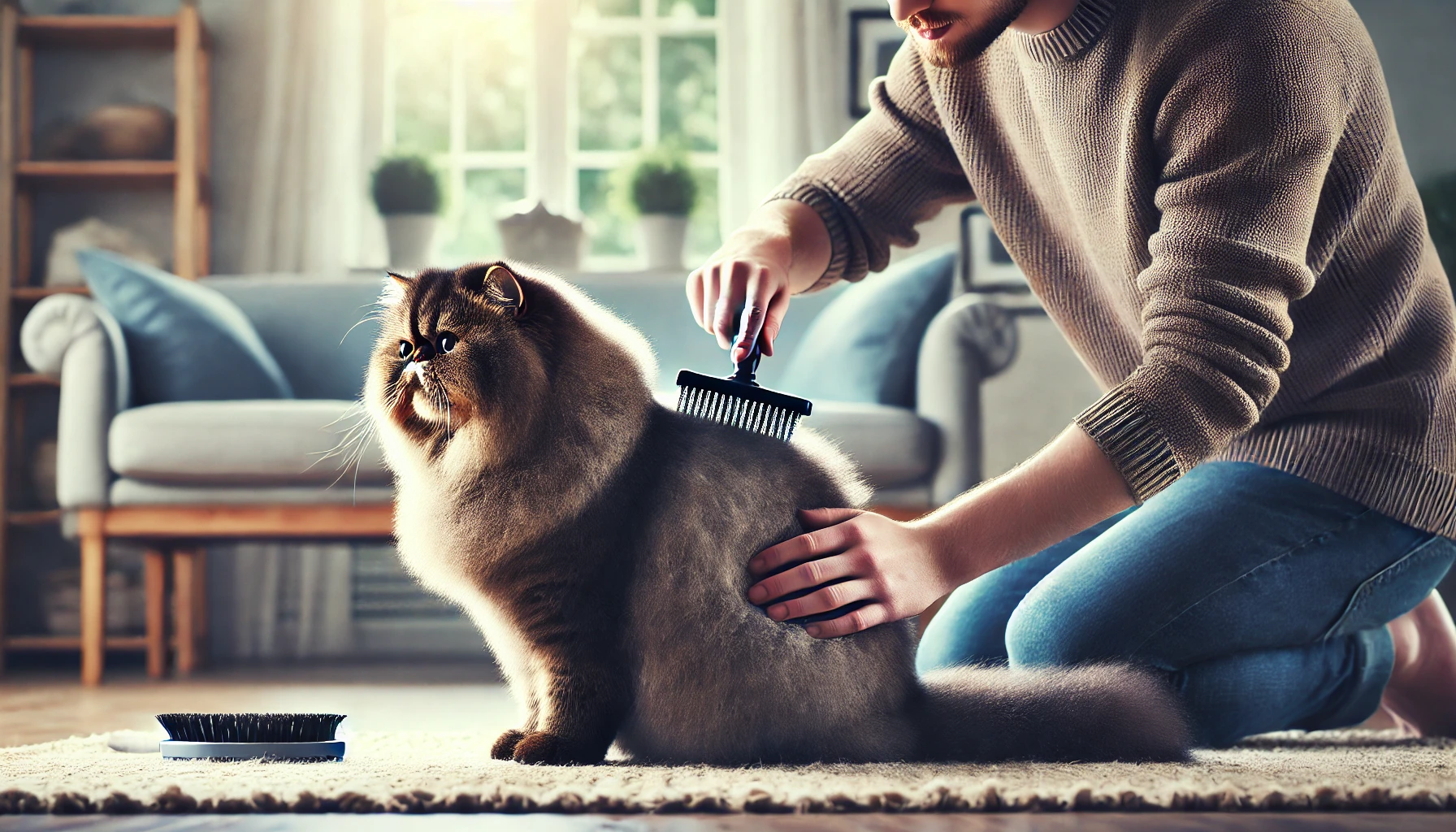
Care and Maintenance of the Exotic Shorthair
Exotic Shorthairs require attention in terms of grooming, diet, exercise, and general health to keep them healthy and cheerful.
Their needs are not too different from those of most cats, but understanding the specifics for this breed can help them thrive.
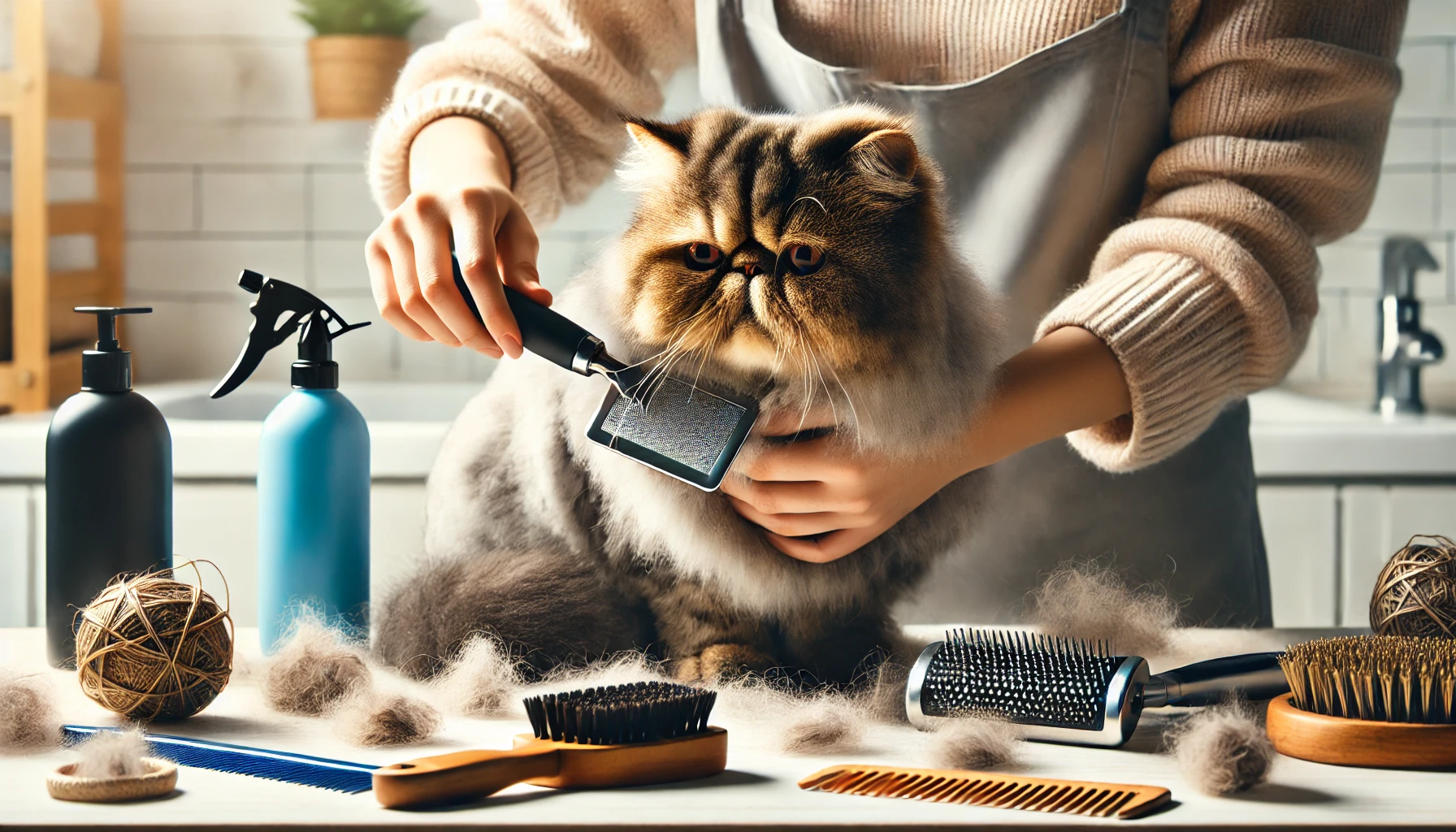
Grooming Requirements
Although the coat of an Exotic Shorthair is shorter than its Persian relatives, it is dense and plush and requires regular grooming to keep it in peak condition.
To care for your cat’s coat:
- Brushing: Gently brush your cat with a metal long-toothed comb once a week to remove loose hair and prevent matting. During heavy shedding seasons, more frequent brushing may be necessary to manage excess hair and reduce hairballs.
- Bathing: Occasional baths can help keep the coat clean and reduce shedding. Use a cat-specific shampoo and thoroughly dry your cat afterward to prevent chills.
- Facial Cleaning: As a flat-faced breed, Exotic Shorthairs are prone to tear staining. Gently clean the corners of the eyes daily with a soft, damp cotton cloth to remove dirt and prevent infections.
- Nail Trimming: Regularly trim your cat’s nails to prevent overgrowth, which can lead to injuries or damage to furniture.

Diet and Nutrition
A balanced diet is essential for the health of your Exotic Shorthair.
Consider the following dietary guidelines:
- High-Quality Protein: Include high-quality animal protein sources such as chicken, turkey, or fish to support muscle development and overall health.
- Controlled Fat Intake: Since obesity is a common issue in this breed, monitor food intake and avoid excessive treats. Choose foods with appropriate fat content.
- Hydration: Ensure fresh water is always available, and consider adding wet food to their diet for additional hydration.
- Portion Control: Feed according to a schedule based on your cat’s age, weight, and activity level to prevent overfeeding.
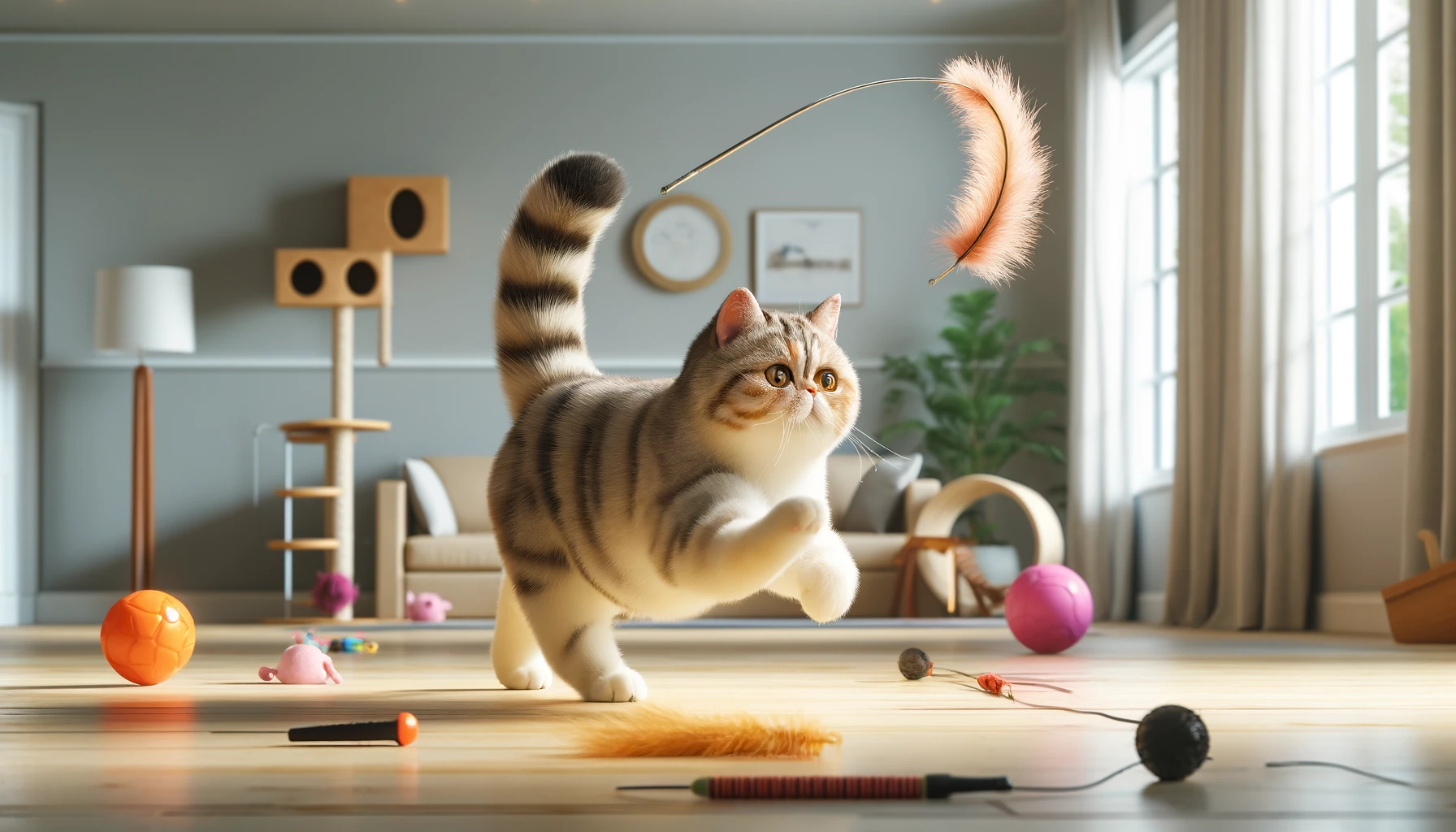
Exercise and Mental Stimulation
Although Exotic Shorthairs are generally laid-back, exercise and mental stimulation are essential for preventing obesity and promoting overall health.
Consider these activities:
- Interactive Play: Engage your cat with toys that stimulate hunting instincts, such as feather wands or laser pointers. Aim for at least 15 minutes of play daily.
- Environmental Enrichment: Provide scratching posts, climbing trees, and puzzle feeders to keep your cat mentally and physically active.
- Social Interaction: Spend quality time with your cat to strengthen your bond and provide emotional enrichment.

Routine Veterinary Care
Your Exotic Shorthair’s health relies on regular veterinary care to prevent and detect health conditions early.
Important examinations include:
- Annual Exams: Schedule yearly vet visits for routine check-ups and to update vaccinations.
- Dental Care: Annual dental examinations, including cleanings, help prevent periodontal disease.
- Health Testing: Discuss routine testing for genetic issues common in this breed, such as Polycystic Kidney Disease (PKD), with your veterinarian.
By following these recommendations for care and maintenance, you can help ensure your Exotic Shorthair enjoys a full, healthy, and happy life.
Despite their shorter coat, Exotic Shorthairs benefit from regular grooming. A balanced diet and moderate exercise ensure they remain healthy and happy.
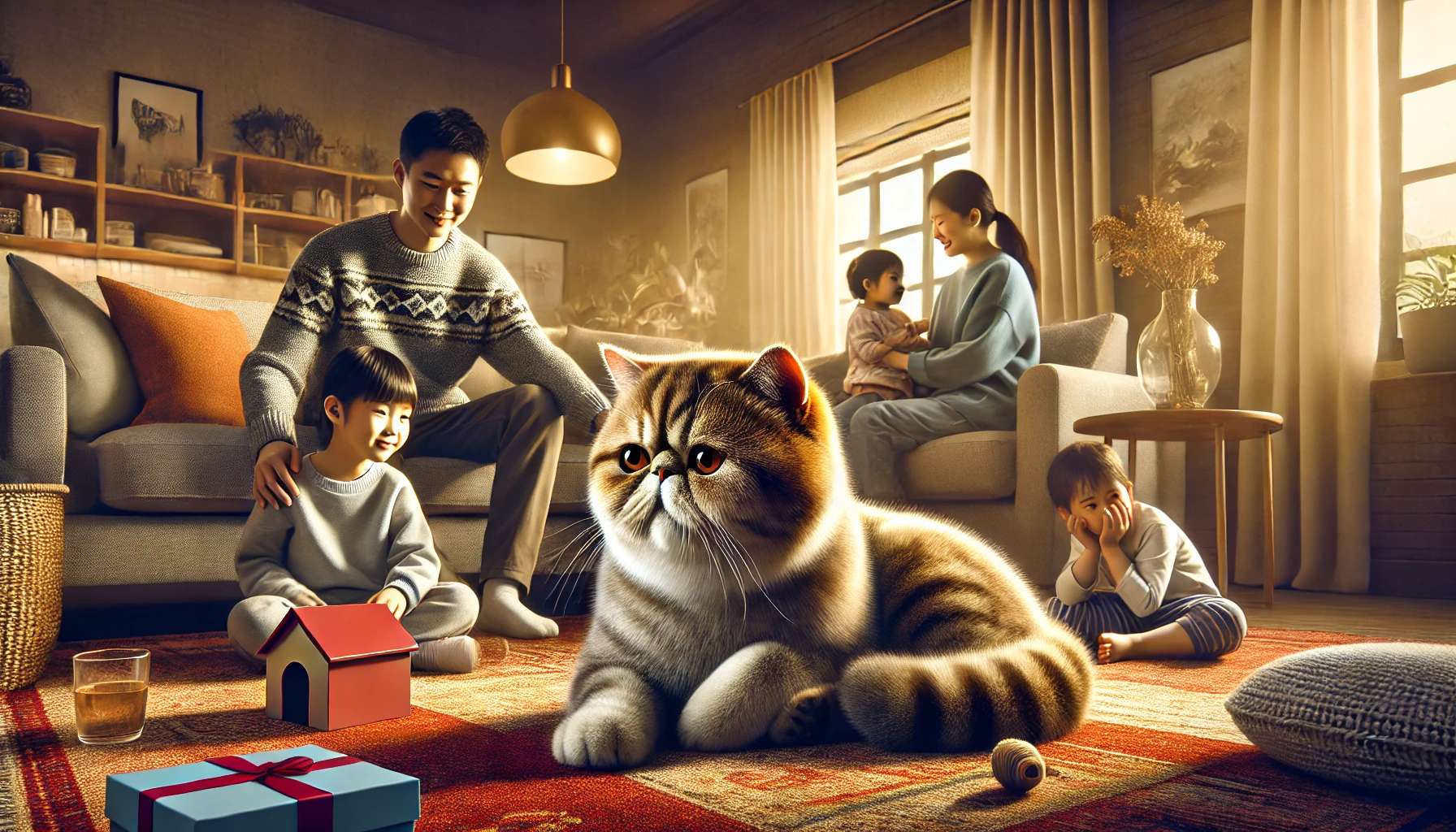
Why the Exotic Shorthair Can Be the Perfect Companion
In short, the Exotic Shorthair is a brilliant breed.
The usual glamour of a Persian melts into a more manageably coated companion, making it ideal for those in need of a low-maintenance yet affectionate cat.
With its unique appearance, charming disposition, and adaptability, this breed has garnered fame among countless cat enthusiasts worldwide—and for good reasons.
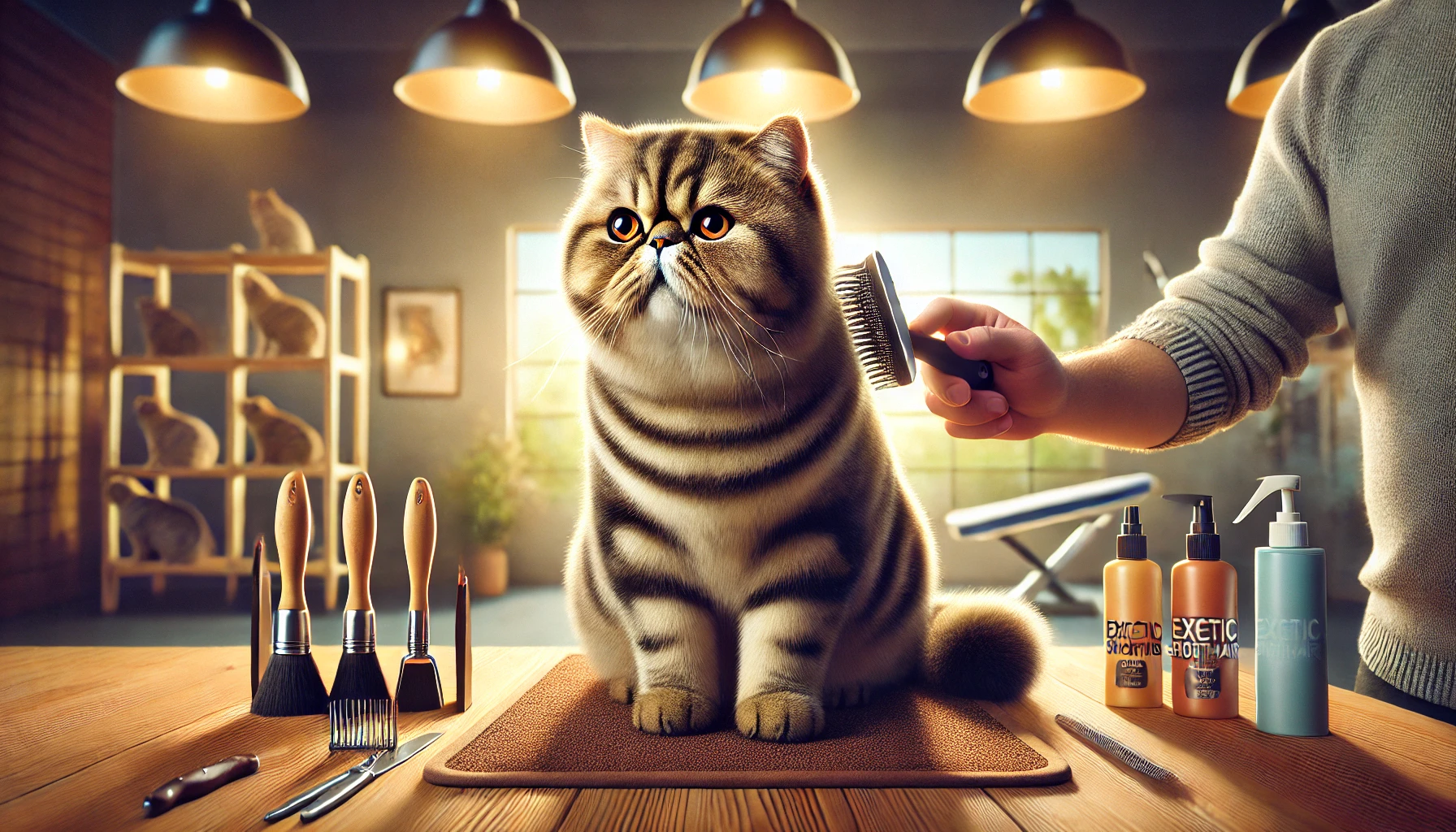
Distinctive Appearance, Easy to Groom
With its sweet, flat-faced features, round eyes, and dense, plush coat, the Exotic Shorthair has a distinctive look that is as unique as it is unmistakable.
While as handsome as Persians, their shorter coat makes grooming simpler and less time-consuming.
A regular grooming routine, including weekly brushing and the occasional bath, is sufficient to keep their coat looking and feeling its best.
This breed’s variety of coat colors—from solid shades to exotic tabby and colorpoint patterns—provides plenty of choices for pet owners based on personal preferences.
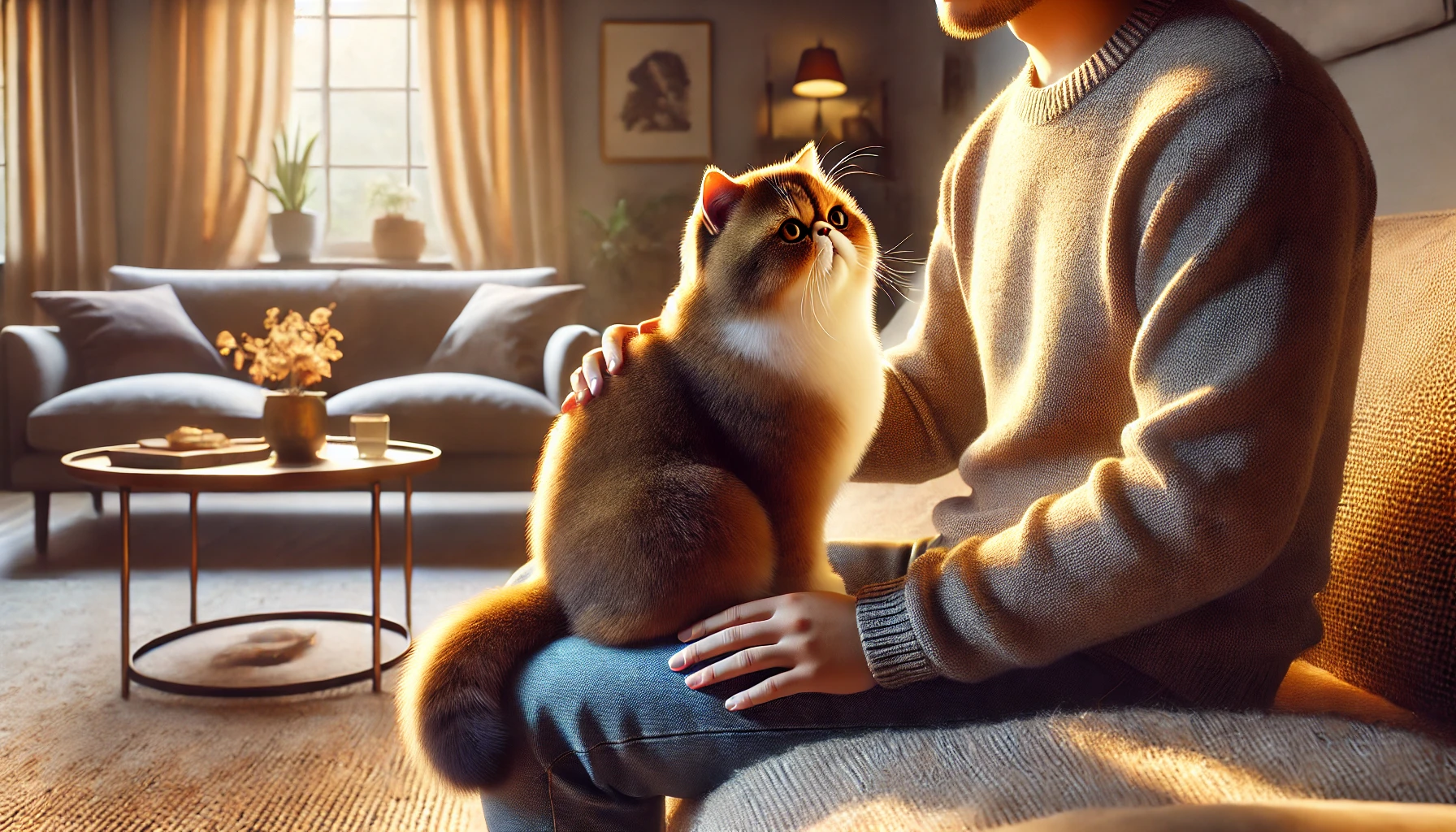
Loyal and Loving Companion
One of the main reasons the Exotic Shorthair is such a popular pet is due to its temperament.
These cats are outgoing, affectionate, and love following their human companions around the house.
Unlike more independent breeds, Exotic Shorthairs thrive on human companionship and make excellent lap cats.
Their easygoing, tolerant nature also makes them a wonderful choice for families with children and other pets.
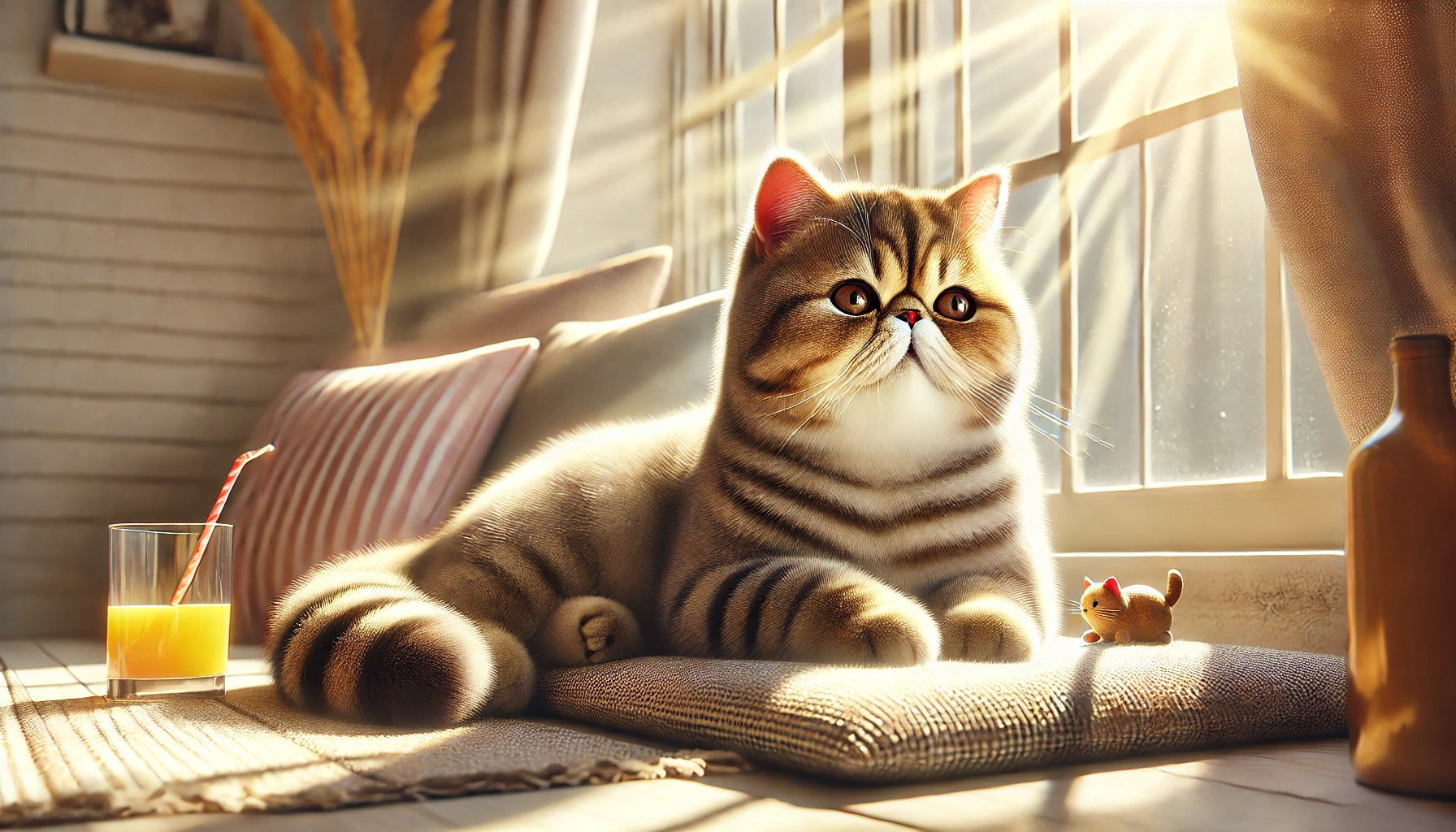
Playfulness Balanced with Low Energy Needs
The Exotic Shorthair is laid-back yet playful, offering a balanced energy level that suits various living environments.
They enjoy interactive toys and games, which provide both physical and mental exercise, but they are also content to relax beside their owner.
Regular opportunities for play and enrichment activities help keep them happy and healthy.

Health Awareness for a Fulfilling Life
Though generally healthy, Exotic Shorthairs are not immune to certain health conditions, including respiratory issues and Polycystic Kidney Disease.
Early attention through regular veterinary visits and proper nutrition can significantly improve their quality of life.
Preventive care, such as dental cleaning and weight management, can help avoid health problems and ensure a long, fulfilling life with your Exotic Shorthair.
In conclusion, the Exotic Shorthair is a charming, low-maintenance, and affectionate breed that thrives in a wide range of settings.
Its unique beauty, friendly temperament, and manageable grooming needs make it an ideal choice for both new and experienced cat lovers alike.
With proper care and love, an Exotic Shorthair can become a cherished addition to any home, bringing joy and companionship for many years to come.
The Exotic Shorthair combines Persian grace with easy maintenance, making it an ideal companion for those seeking both beauty and a manageable pet.
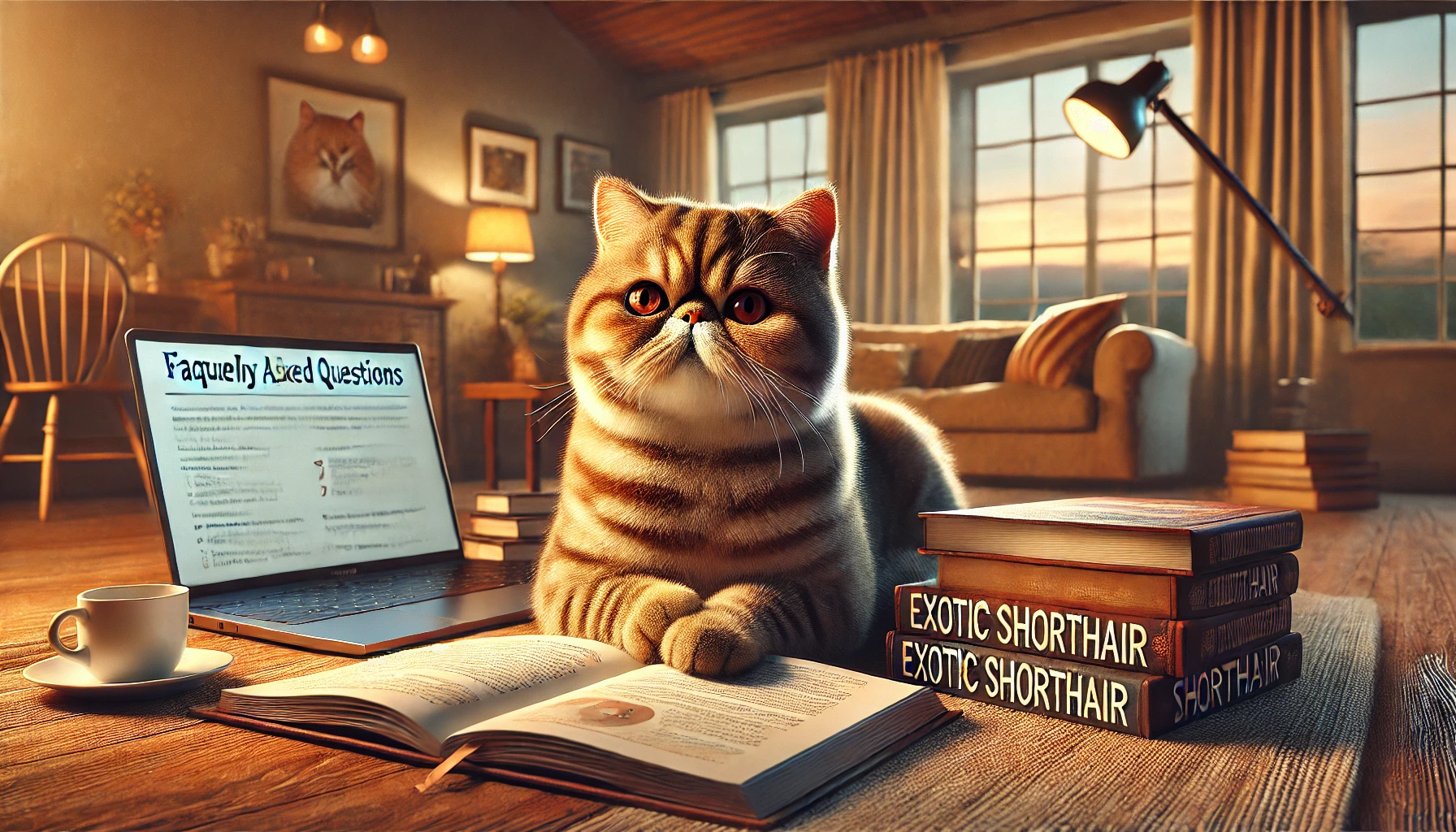
Frequently Asked Questions About the Exotic Shorthair
Here are some commonly asked questions and brief answers regarding the Exotic Shorthair cat breed that can help you get to know them better.
How long does an Exotic Shorthair live?
Exotic Shorthairs typically live between 12 to 15 years, with some living longer if given proper care.
Are Exotic Shorthairs good with children and other pets?
Yes, they are known for their gentle and easygoing nature, making them perfect companions for families with children and other pets.
Do Exotic Shorthairs require a lot of grooming?
Despite having a thick coat, they generally only need brushing once a week to keep their fur in good condition.
Are Exotic Shorthairs prone to any health problems?
They can be prone to respiratory issues due to their facial structure and are also at risk for Polycystic Kidney Disease (PKD).
How large does an Exotic Shorthair typically get?
Exotic Shorthairs are medium to large-sized cats, with males weighing around 7 to 14 pounds and females slightly less.
Are Exotic Shorthairs playful?
They are playful yet laid-back cats that enjoy interactive toys and games, making them a fun and engaging pet.
How often should I bring my Exotic Shorthair in for a check-up?
Annual veterinary check-ups are recommended to ensure your cat remains healthy and to address any issues early.
Can Exotic Shorthairs live in apartments?
Yes, their adaptable and docile nature makes them well-suited for apartment living.
What type of diet is suitable for an Exotic Shorthair?
An ideal diet includes high-quality animal protein with moderated fat intake to keep them healthy and fit.

